Free Guide: Asian Skinny Fat to Fit
A guide for fixing your skinny fat physique and building the body you want.


So you want to start calisthenics? Let me help you get off to a great start.
Want to jump right into to the workout? Just click here.
In this post I want to talk specifically about the exercises you’ll be doing.
Why start here? It’s simple. The exercises are the foundation of whatever path you choose to head down next.
There’s handbalancing. The planche. The front lever. Flexibility training. Handstand pushups. One arm handstands. One arm pullups.
Yeah, you have a ton of options to choose from. Look into those and start to think about some of your long-term goals.
But regardless of where you’re headed, you need to get stronger. And these exercises will make up the bulk of your regular training to help you hit those goals.
Even if you’ve never worked out a day in your life, you’re probably familiar with a handful of exercises.
That’s just a few. There’s an endless number of exercises, whether it’s a bodyweight calisthenics exercise or one you’d do in the gym with weights like dumbbells or barbells.
With a large amount of data like this, it’s best to categorize these exercises in some way.
The simplest categorization would be something like “upper body” exercises and “lower body” exercises.
Here’s the list above grouped using the “Upper” and “Lower” groupings.
| Upper | Lower |
|---|---|
| Pushup | Squat |
| Pullup | Lunge |
| Chinup |
That’s a logical grouping. If we were trying to make our legs stronger, it wouldn’t make much sense to do “Upper” exercises.
We can take this one step further by separating the “Upper” exercises into “Push” and “Pull” groups. Here’s what that would look like.
| Upper | Lower | |
|---|---|---|
| Push | Pull | Legs |
| Pushup | Pullup | Squat |
| Chinup | Lunge | |
Once again, this is a logical grouping. If we we’re trying to increase our pushing strength, it wouldn’t make much sense to do a bunch of pulling exercises even though they’re both a part of the same parent category (“Upper”).
Let’s take this one step further by separating the “Push” and “Pull” group into two more groups: “Vertical” and “Horizontal”.
| Upper | Lower | |||
|---|---|---|---|---|
| Push | Pull | Legs | ||
| Horizontal Push | Vertical Push | Horizontal Pull | Vertical Pull | Legs |
| Pushup | Bar Dip* | Bodyweight Row* | Pullup | Squat |
| Tuck Planche* | Handstand Pushup* | Tuck Front Lever* | Chinup | Lunge |
This grouping might not make as much sense at first glance.
Let’s get to why this grouping makes sense and how we can use it to our advantage during our training.
Remember this from earlier?
If we we’re trying to increase our pushing strength, it wouldn’t make much sense to do a bunch of pulling exercises even though they’re both a part of the same parent category (“Upper”).
Imagine you were trying to increase your pushup strength. If you just picked any pushing exercise, you might land on something like an overhead press.
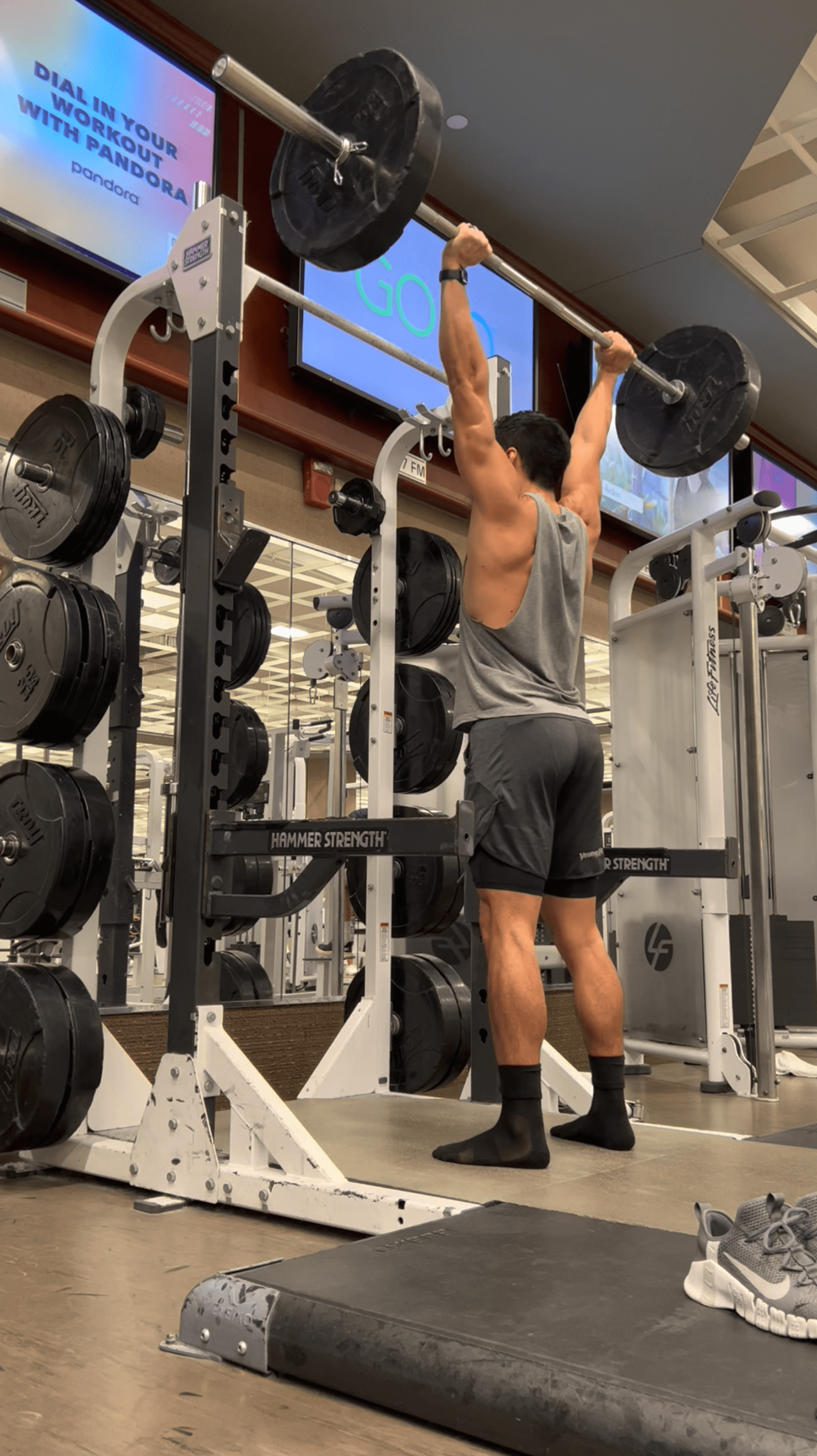
I won’t go so far as saying it won’t have any effect whatsoever on your pushup strength, but it’s not a good option primarily because of the direction you are pushing. The overhead press is a vertical pushing motion (up and down) rather than a horizontal pushing motion like the pushup (forwards and backwards).
We can apply the same logic to increasing your pullup strength. If you picked something like a bodyweight row, it might help but once again the direction of your pulling motion (horizontal) doesn’t match the pullup’s vertical pulling motion.
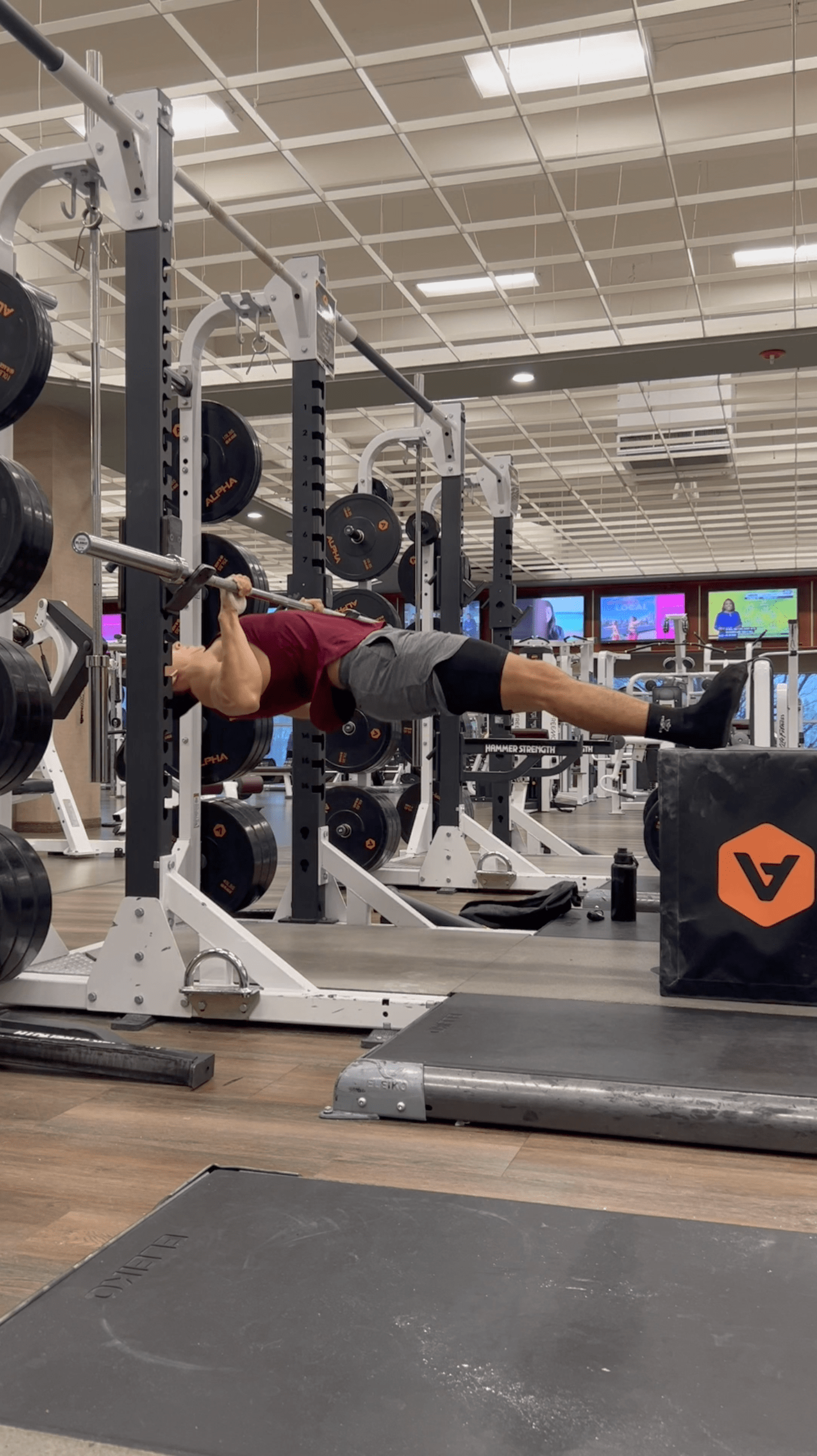
This is why the “Push” and “Pull” exercises were grouped one level deeper into four categories:
With this structure in mind, let’s take a look at our first group in more detail: Horizontal Pushing.
A picture is worth 1,000 words so let’s start with a graphic to give you a visual reference.
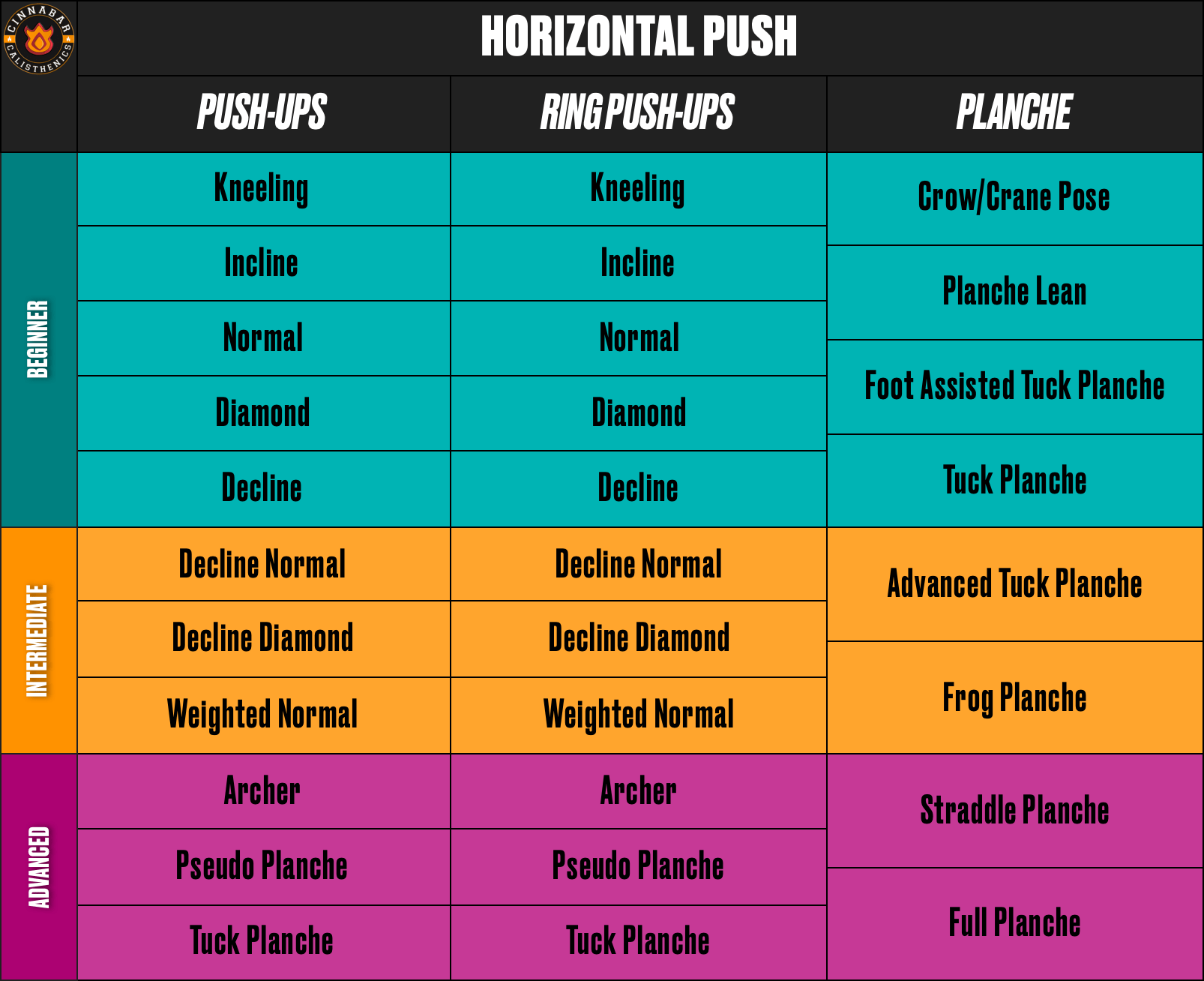
As you can see there are multiple variations of the pushup grouped by difficulty.
Of course there are many other types of horizontal pushing exercises but when you’re just starting out, it’s best to stick to the basics.
The list here can help you:
In the right column you can see one of the popular Horizontal Pushing skills: the Planche.
Your strength doing exercises like the pushup and it’s more advanced progressions will transfer to a more advanced skill like the Planche.
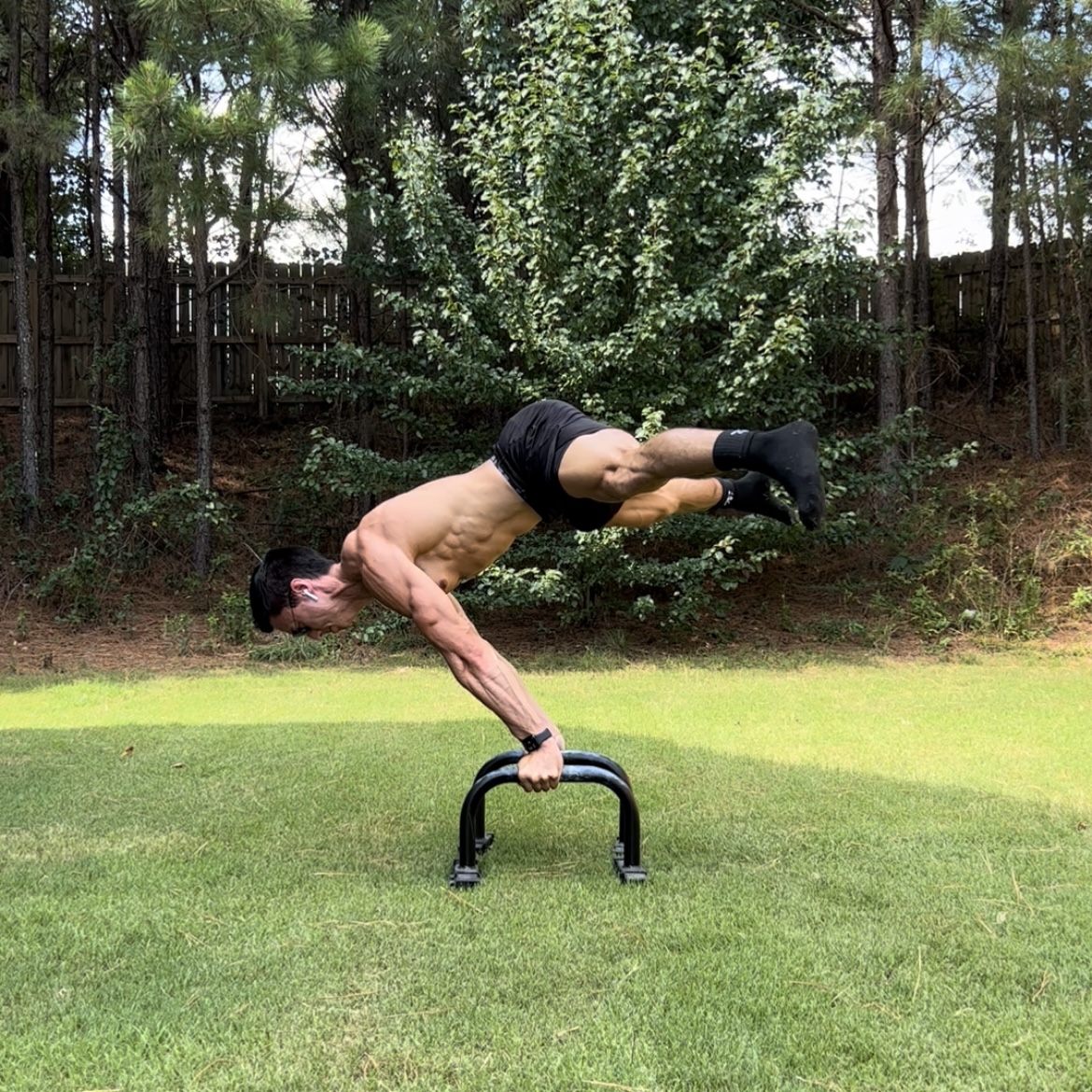
⚠️ The Pushup is just one of many exercises you can and should use to help you build strength for the Planche. I limited these graphics to one exercise for illustration purposes only.We’ll get to how you should use these in a minute when I show you an example of a full body workout.
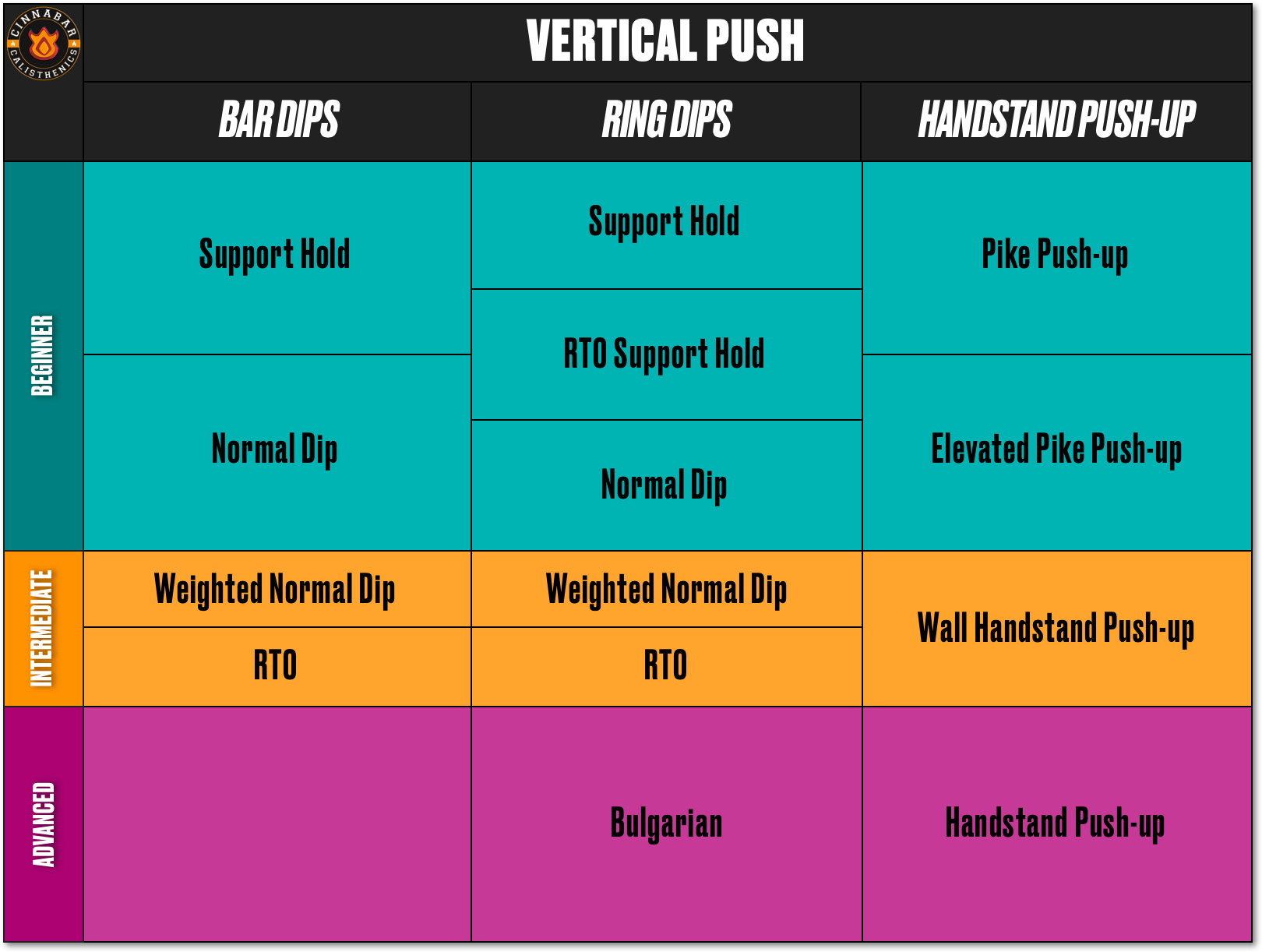
Once again you can see one of the foundational vertical pushing exercises, Bar Dips, and the progressions from beginner to intermediate/advanced.
Similarly, you can see the skill portion in the right column using one of the popular Vertical Pushing skills: the Handstand Pushup.
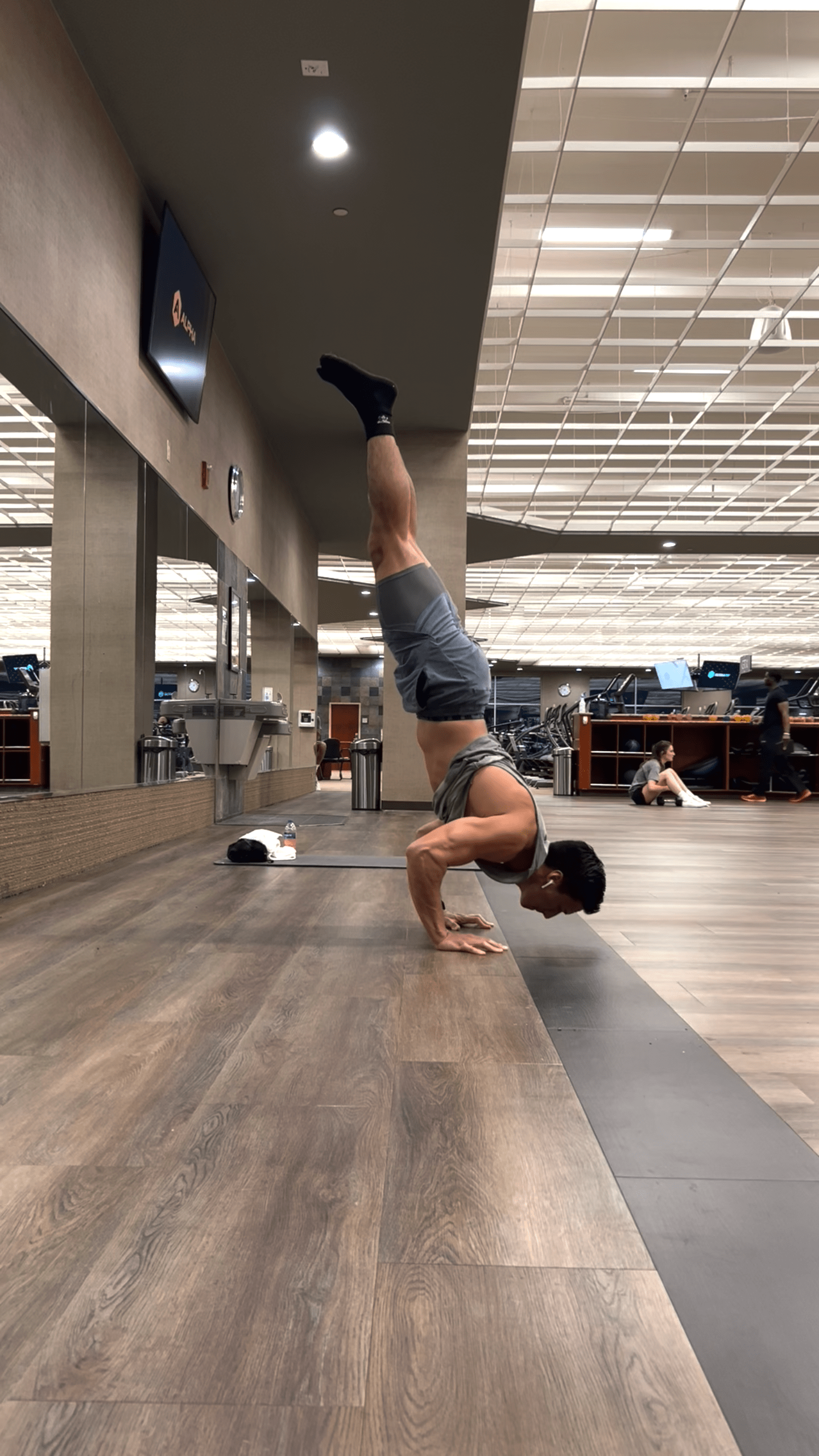
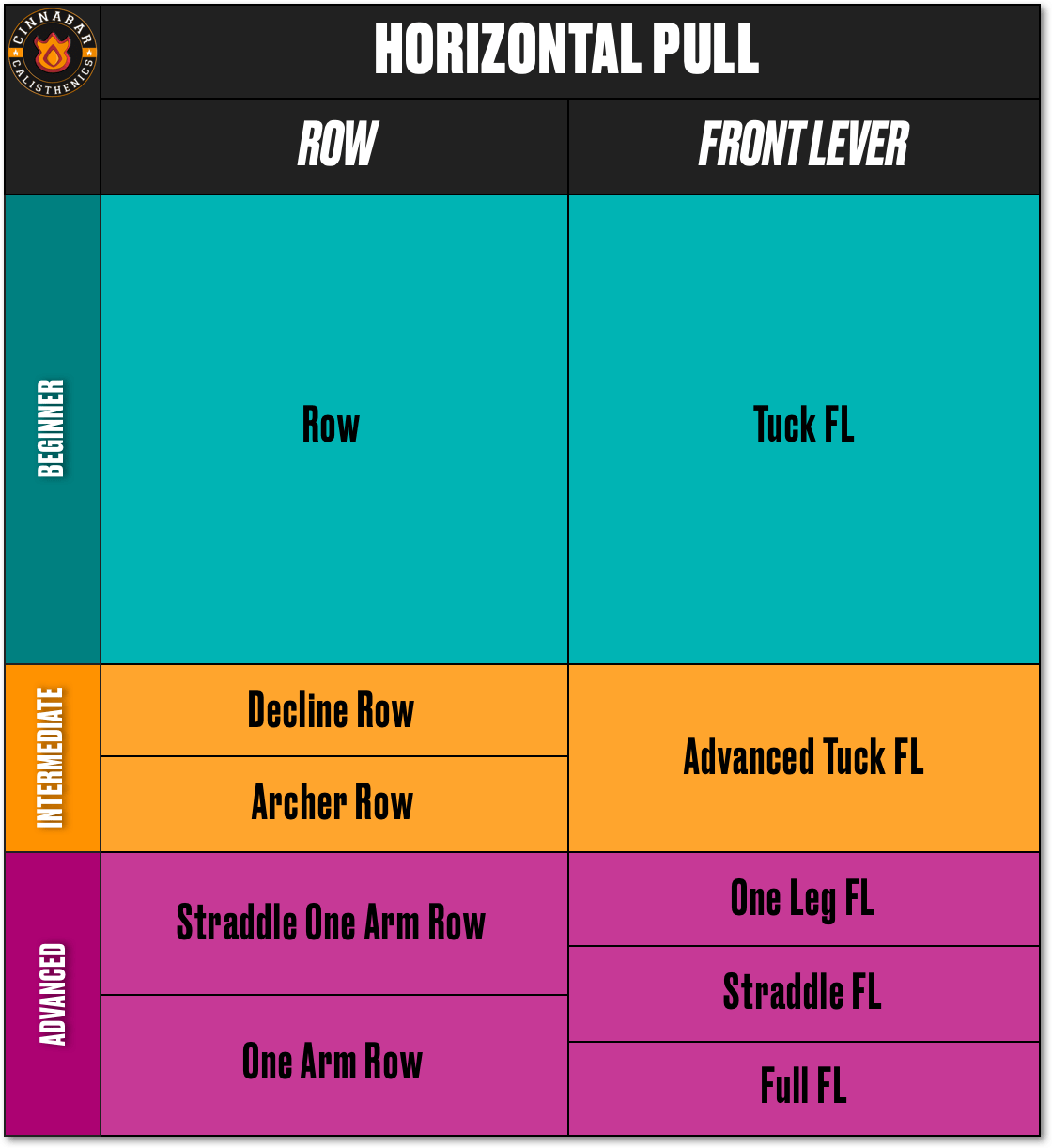
I think you know the drill by now, right?
One the left you see the foundational Horizontal Pulling exercise, the Bodyweight Row, and on the right side you see a popular skill, the Front Lever.
Get stronger at Rows if you want to do a front lever.

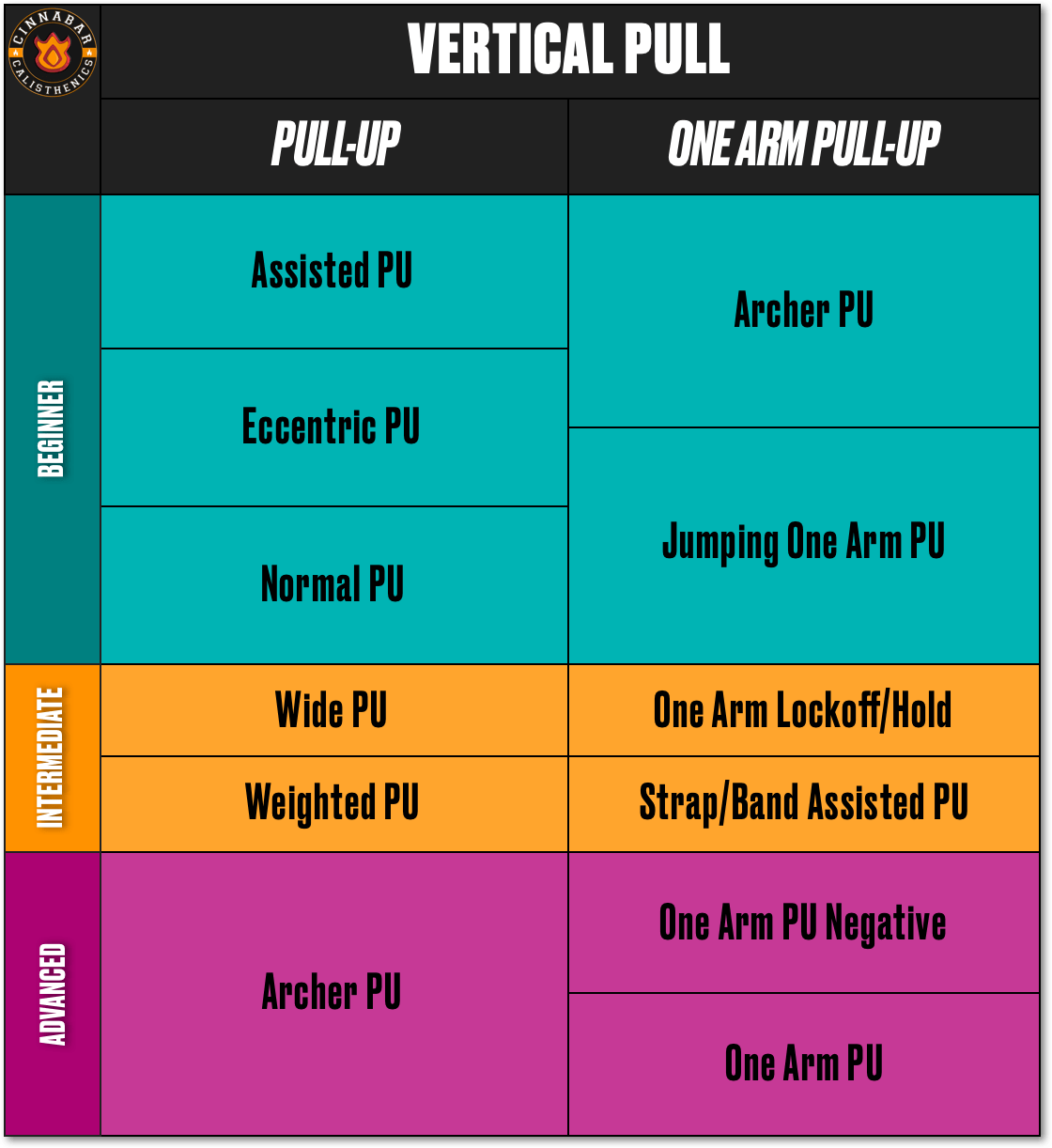
One the left you see the foundational Vertical Pulling exercise, the Pullup, and on the right side you see a popular skill, the One Arm Pullup.
Get stronger at Pullups if you want to do a One Arm Pullup.
Sorry, no image to share here! The One Arm Pullup doesn’t interest me so I don’t train for it. I still do Pullups!
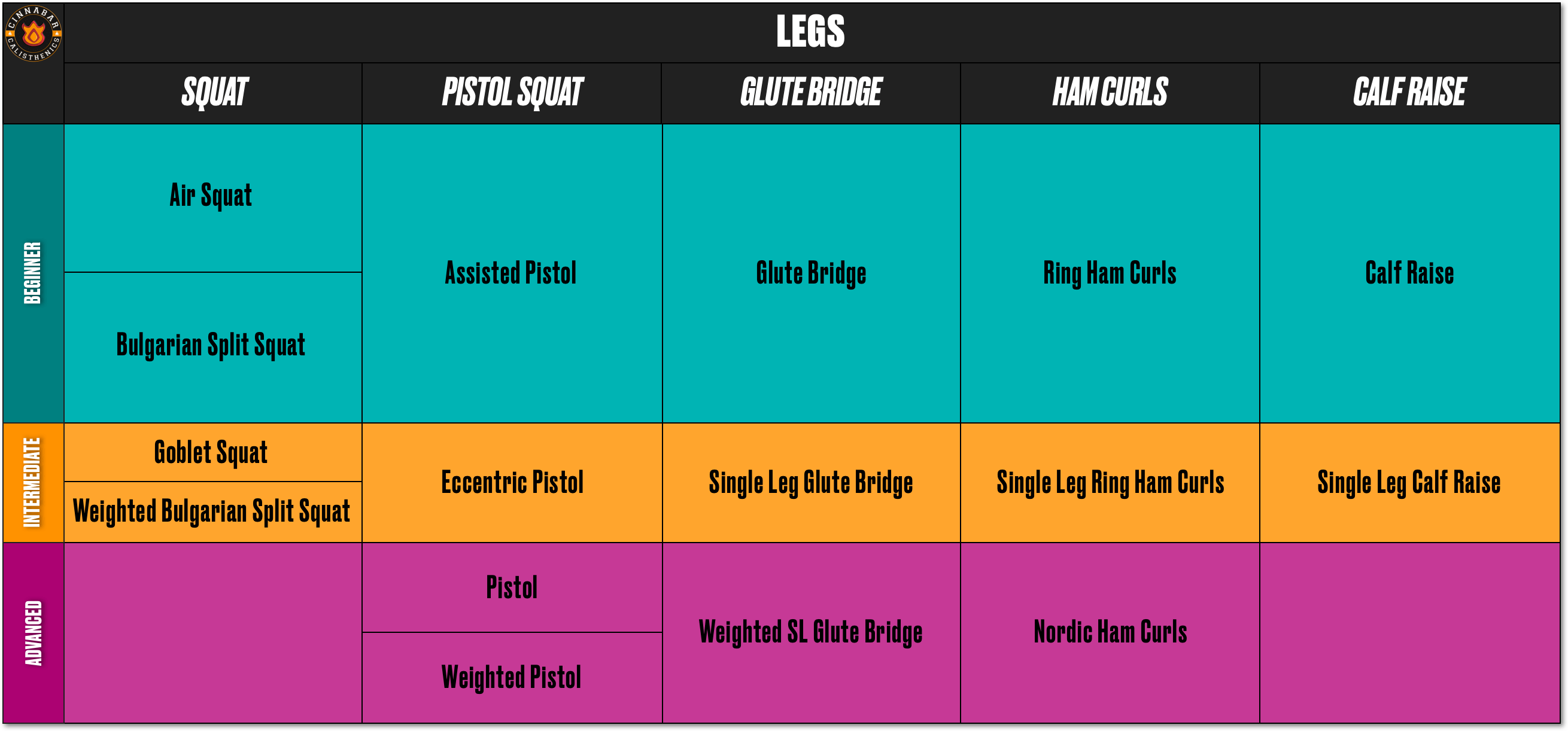
Finally, we have legs. I won’t go into too much detail here for a few reasons:
Most of your leg training is going to involve:
The image above shows some of the calisthenics exercises for legs but as you can see, there are no calisthenics “skills” they help you build towards.
There’s one big benefit to breaking down exercises into these movements patterns.
If you’ve ever played an RPG, you’re familiar with the process of leveling up and increasing your stats: +1 strength, +2 agility, +1 vitality.
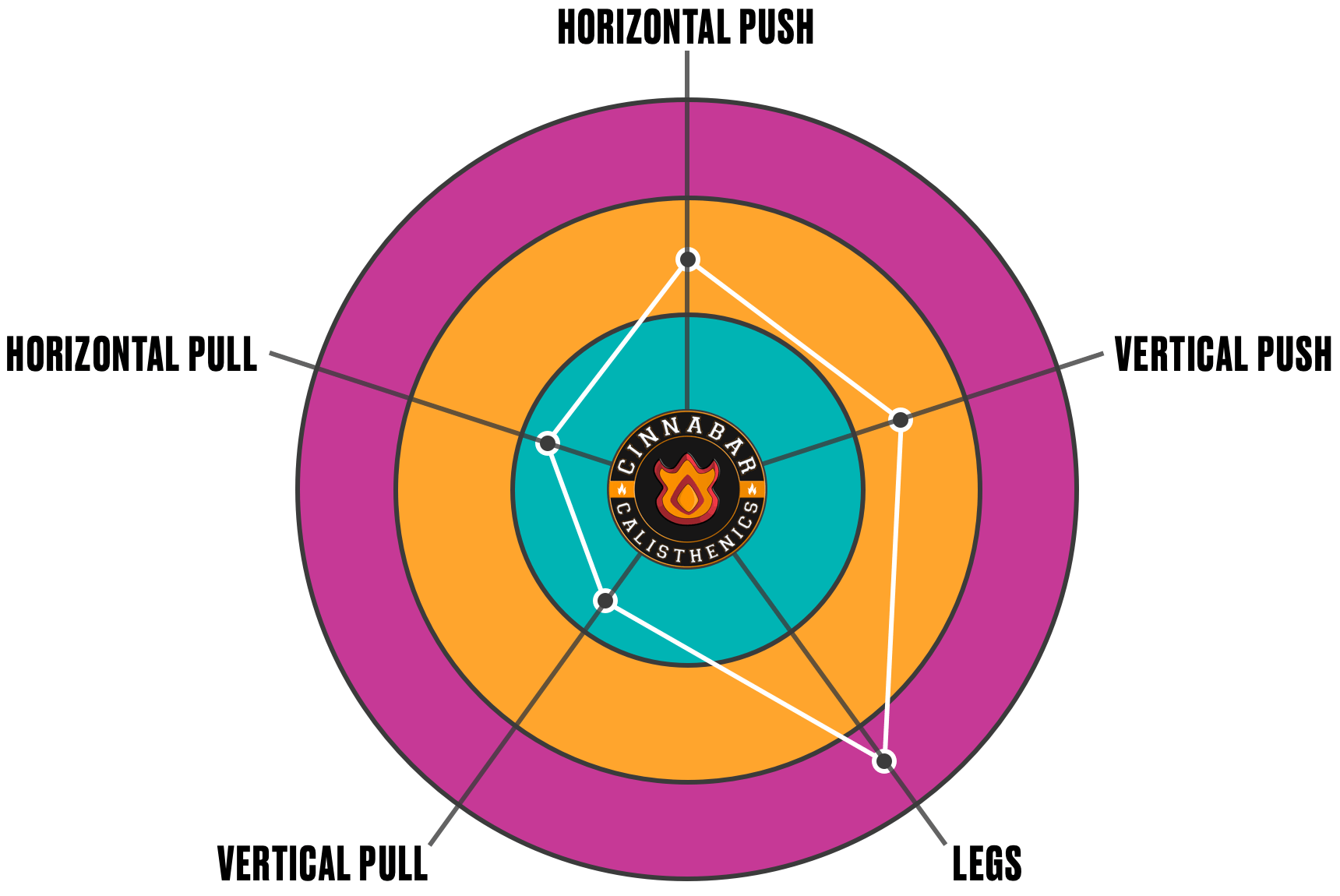
Why not do the same thing for your calisthenics training? Once you figure out what level you’re at for each of the movement patterns, you can view your calisthenics training like a game.
Maybe you used to bike a lot so your legs are strong but your upper body is weak, especially pulling motions.
Using the charts and progressions shown above you get a solid understanding of your current abilities (intermediate at horizontal pushing), what exercise you should use to train (weighted pushups), and what exercise is next in the progression (pseudo planche pushups).
Note: I go into more detail about the process of “gamifying” your training in this YouTube video.
Here’s your free, full body calisthenics workout. Click the exercise name for a video demonstration of how the exercise is done.
| Exercise | Sets | Reps |
|---|---|---|
| Pushup | 2 | 5-15 |
| Bar Dip/Bench Dip | 2 | 5-20 |
| Bodyweight Row/Banded Row | 2 | 5-15 |
| Pullup/Chinup/Banded Pulldown | 2 | 3-10 |
| Bodyweight Squat | 2 | 10-20 |
If you can’t do any of the exercises listed above, whether it’s due to a lack of strength or a lack of equipment, I can guarantee there’s another variation of the exercise to use as a substitute.
Using the knowledge you’ve gained in this blog post, it’s as straightforward as finding another exercise with the same movement pattern (Vertical Pushing) of the exercise you’re trying to replace.
So if you’re struggling to do a Pushup (Horizontal Pushing) you can replace it with another Horizontal Pushing exercise like the Incline Pushup.
Thankfully, I have a resource just for you to help you do this!
You should check out my Complete List of Calisthenics Exercises which includes a ton of calisthenics exercises with video and photo demonstrations to help you get started.

Each exercise includes a demo, the movement type, as well as the equipment you’ll need to do it.
It’s totally free so you have nothing to lose! Click here to get immediate, free access!
Got any questions? Get in touch with me and let me know!